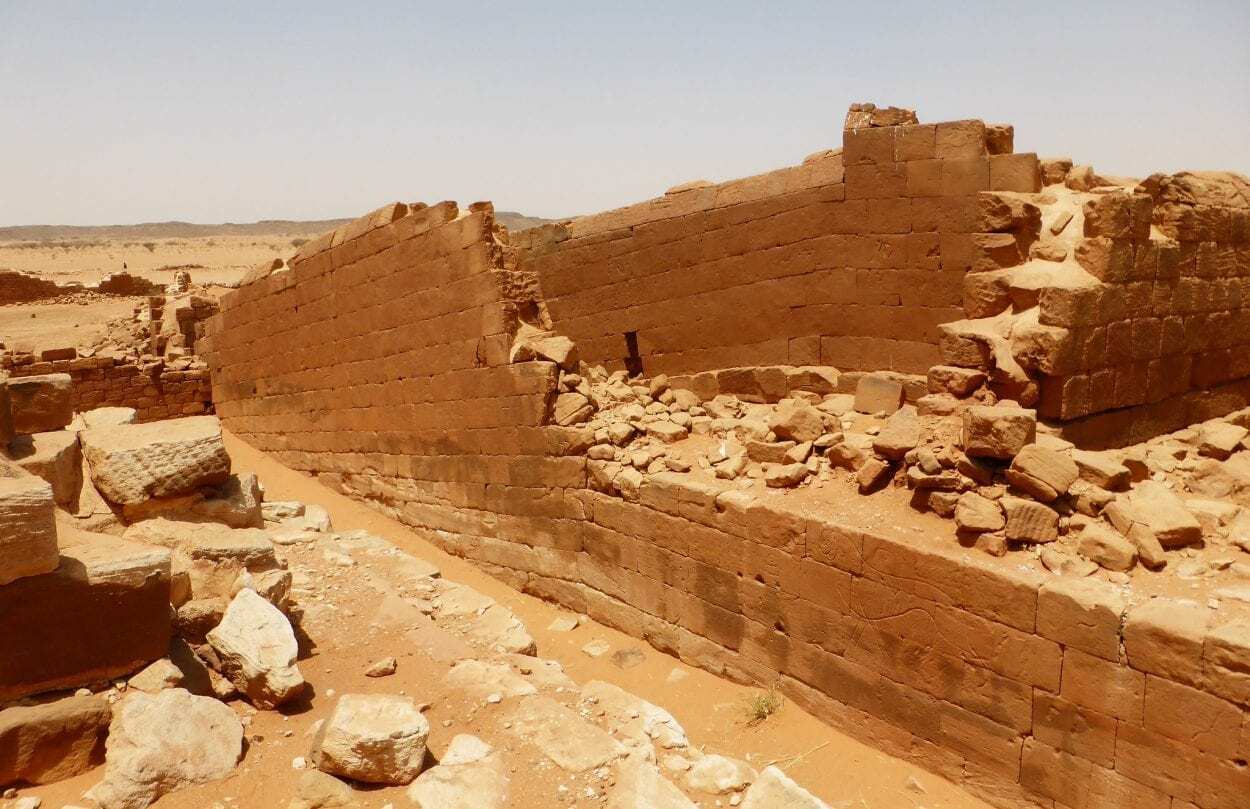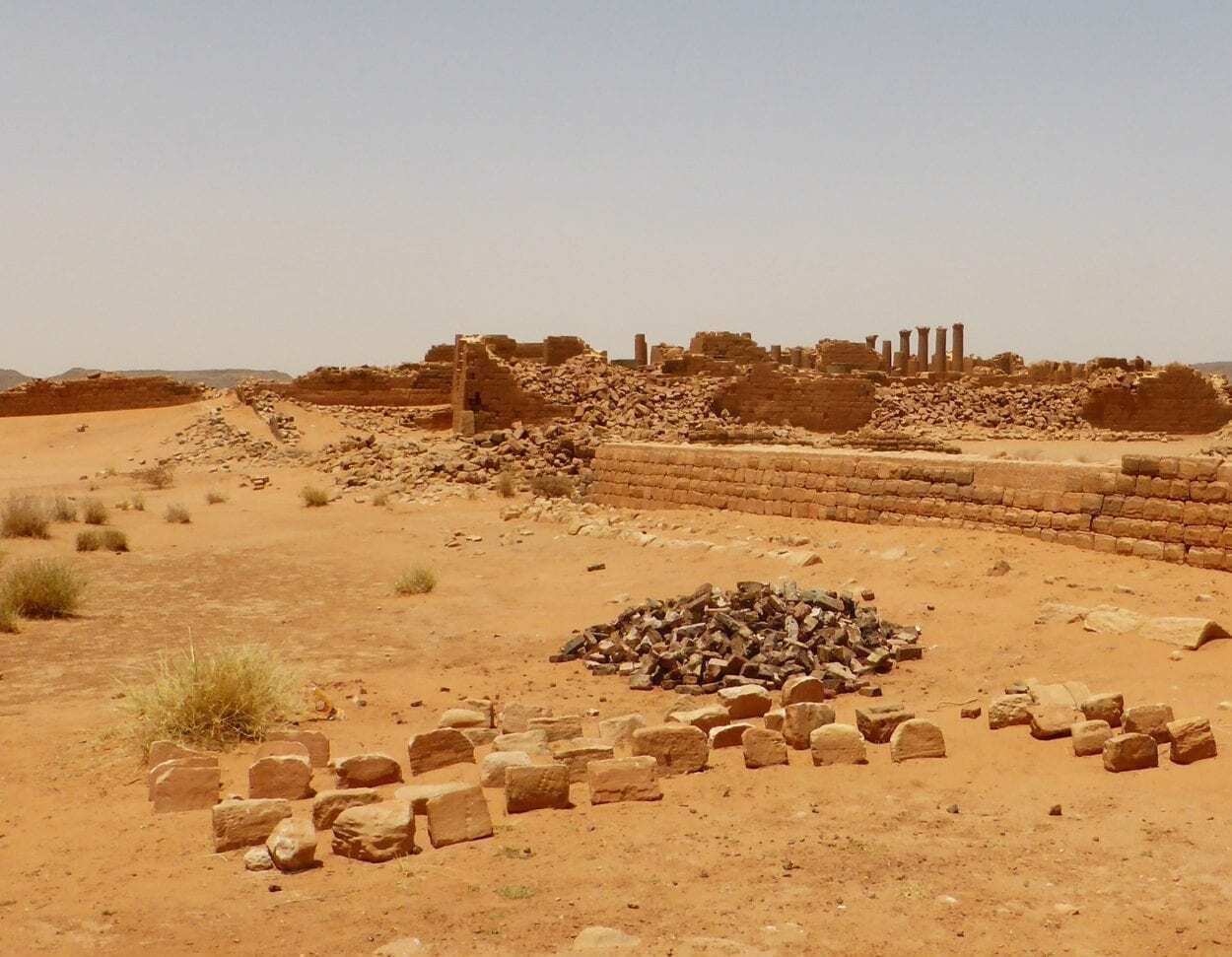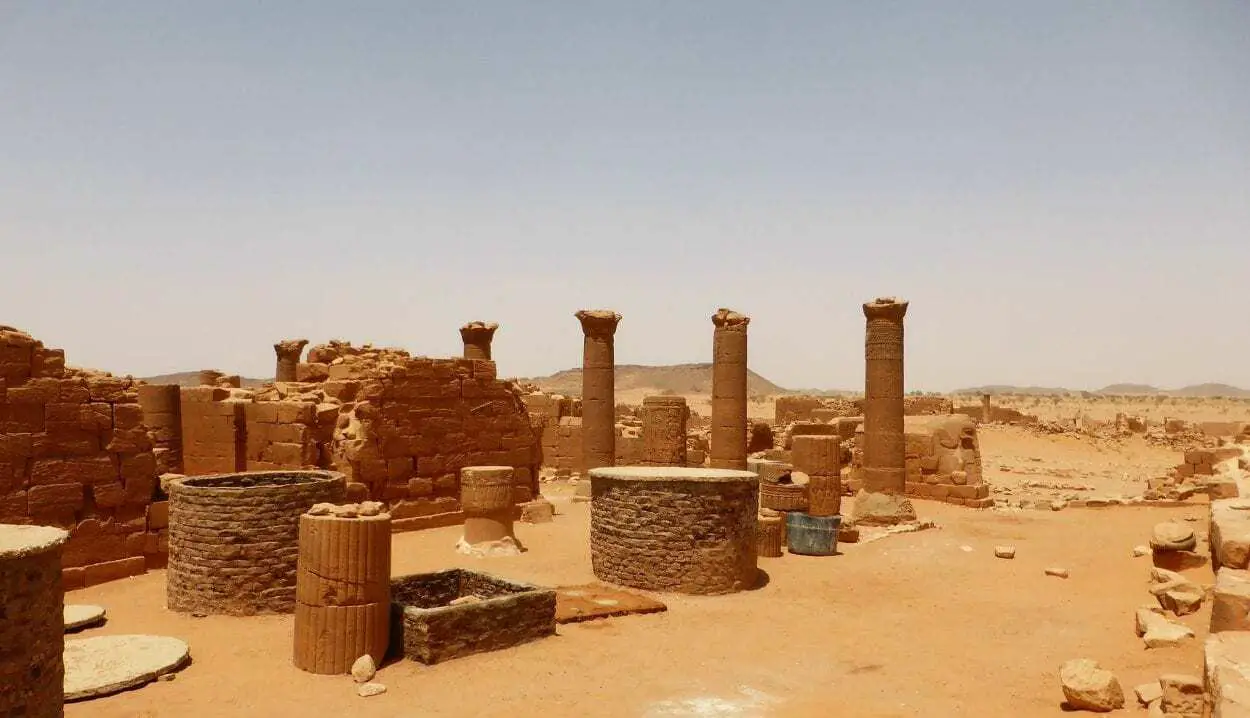Al-Musawwarat as-Safra, also called Al-Musawarat Al-Sufra is an ancient temple city of the early Meroitic period, located in Western Butan (historically called the Island of Meroë) in Sudan.
The Meroitic period refers to the rise of Meroë as the new centre of the consolidated Kush Kingdom, lasting from around the 5th century BC to the 4th century AD. The Meroitic Kingdom reached as far as Sennar in the south of present-day Sudan, and as far North as the Second Cataract of the Nile.
Al-Musawwarat as-Safra was established around the 3rd century BC in a wadi (valley) outside of the Nile valley in the semiarid landscape of the Keraba.
The most prominent monuments include the Great Hafir and Small Hafir (reservoirs), the Lion Temple commissioned by the early Meroitic king Arnakhamani, and the Great Enclosure, a labyrinth-like building complex erected in the mid-3rd century BC (although the archaeological record suggests the site was occupied as early as the Napatan period (664 – 270 BC).

The Great Enclosure consists of several temples (although the dedicatory deities are uncertain), with the central buildings connected to solitary structures by a series of long corridors, and numerous terraces and courtyards covering an area of 13.5 acres.
Within the complex, archaeologists have yet to discover any formal decoration, but a detailed study has documented many sculptures of animals, such as elephants, with most of the walls of the complex featuring graffiti and masons’ or pilgrims’ marks both pictorial and in Meroitic or Greek script.

The purpose of the Great Enclosure has led to various interpretations, such as a temple for worshipping the lion god Apedemak, a palace and sacred site for the investiture of Meroitic Kings, or even an elephant training camp.
The wider city landscape had no sizeable settlements apart from a small enclosure that possibly served as the private dwellings of the high priest and elite. The sacred nature of Al-Musawwarat as-Safra is suggested by the lack of burials and tombs, in contrast to the Island of Meroë which is most noted for the cluster of royal burials comprising of three pyramid fields that contain over two hundred pyramids.

In 2011, the Island of Meroe, consisting of Al-Musawwarat as-Safra, Meroë and Naqa was listed as a UNESCO World Heritage Site.
Header Image – Apedemak (lion) temple in Musawwarat es-sufra – Image Credit : Hans Birger Nilsen – CC BY-SA 2.0







